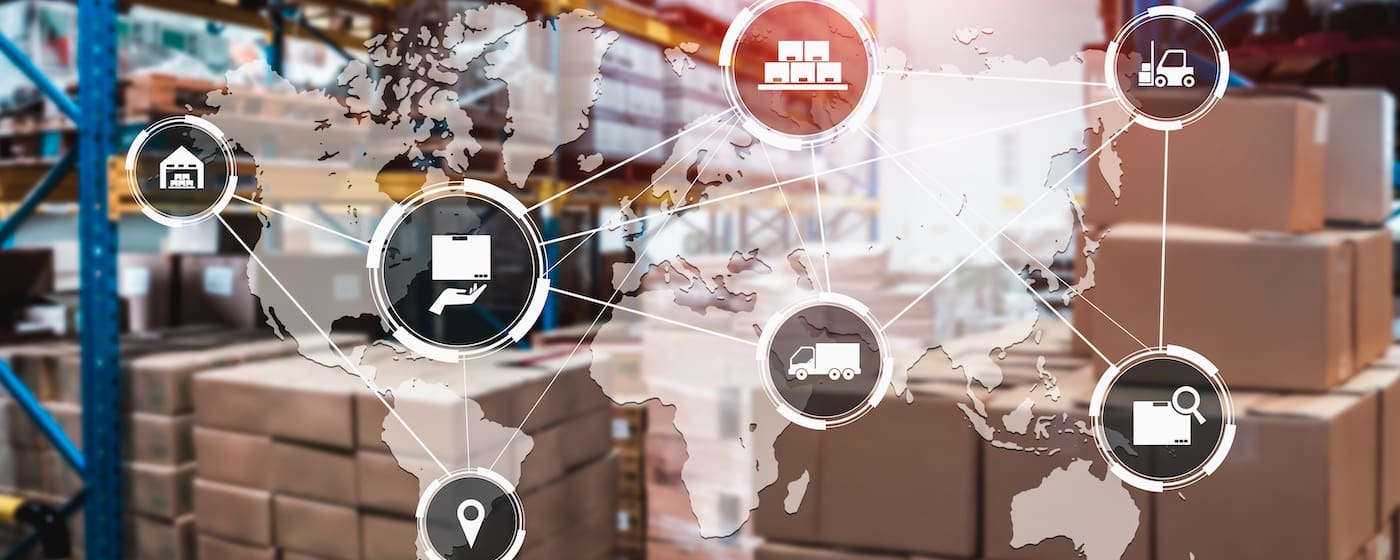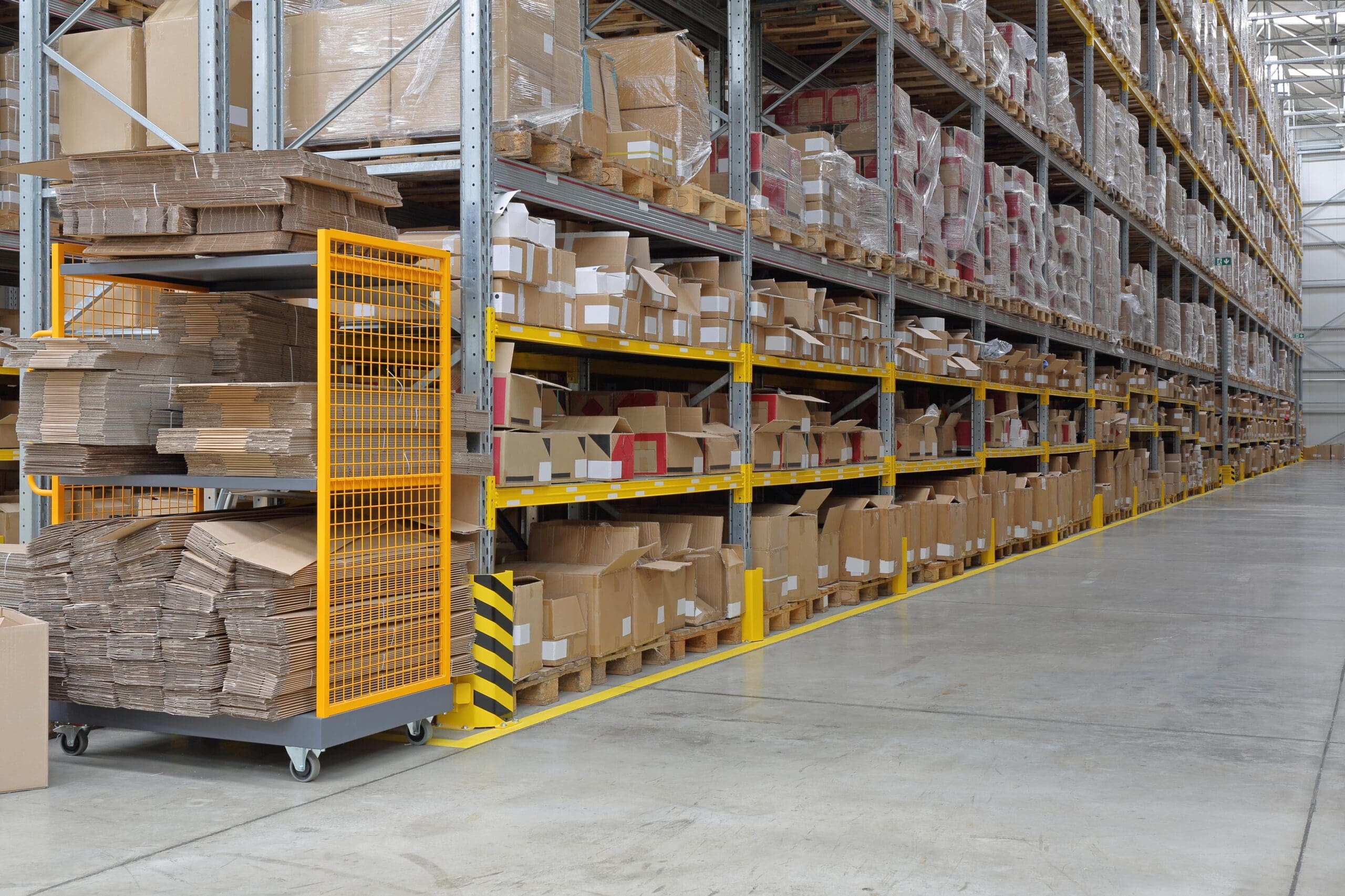Table of Contents
** Minutes
Benefits of supply chain mapping for ecommerce fulfillment
Common challenges to overcome in supply chain mapping
How to map your ecommerce supply chain
When you’re exploring a new place, a map is an incredibly useful tool. It gives you an understanding of where you are, minimizes your risk of getting lost, and even helps you learn how to navigate the place in the future.
When you’re trying to understand your supply chain, a supply chain map is useful for these same reasons. Supply chain mapping helps you understand where your products are coming from, and how different supply chain functions are accomplished – which, in turn, enables your ecommerce business to improve risk management and prepare for your future.
In this article, we’ll unpack how to map your supply chain, the benefits and challenges of doing so, and how logistics partners like ShipBob can help.
What is supply chain mapping?
Supply chain mapping is the process of collecting information about key stakeholders and partners in your supply chain to create a comprehensive map of your supply network.
These partners include your suppliers, your suppliers’ partners and suppliers, and other service providers that your supply chain depends upon.
Once you have gathered information on each of these parties, you can create a data “map” that details where all materials are sourced and how finished goods move through your supply chain.
Why is supply chain mapping important?
Supply chain mapping is vital for getting full visibility into your supply chain operations. This visibility enables your brand to:
- Comply with corporate, legal, and ethical regulations in your sourcing and supply chain operations.
- Respond to unexpected supply chain disruptions (such as supplier shortages, demand surges, and transit delays).
- Manage supply chain risk by identifying potential vulnerabilities and addressing them before they become problems.
The role of technology in supply chain mapping for ecommerce
Fortunately for ecommerce businesses, advancements in supply chain technology have made it easier to map a supply chain – and to improve supply chain visibility in general. The availability of real-time data makes it easier and easier to get comprehensive information on one’s supply chain, and draw better insights from that data.
For example, demand forecasting tools can now make more accurate predictions about future demand based on historical sales data, changing consumer demand, and market trends. Minute-by minute inventory tracking can also give merchants a clear idea of where inventory is at all times and how it’s moving through a supply chain.
Better yet, much of this technology is available through partnership with a tech-enabled fulfillment or logistics partner. This means that, in addition to picking, packing, and shipping services, these experts can provide top-notch supply chain technology that you can leverage in supply chain mapping.
Benefits of supply chain mapping for ecommerce fulfillment
Mapping your supply chain may seem unnecessary, but there are many reasons why the process is worth your time.
Improve operations efficiency
Supply chain mapping helps you to analyze how different parts of your supply chain operations are connected. This allows you to identify inefficiencies and pinpoint where delays are originating. Optimizing these problem areas will then help you improve your supply chain efficiency.
For example, if you notice that there are constant delivery delays with a certain logistics partner, you are then able to find a way to speed up deliveries or find a new partner.
Anticipate risk and prevent issues
When you have full visibility into your supply chain, you are better equipped to anticipate risks. Mapping your entire supply chain makes it easier to spot supply chain bottlenecks in earlier stages, and take measures to mitigate them before they turn into much bigger problems further down the line, and create a more resilient supply chain.
For instance, if you anticipate possible sourcing delays because of a natural disaster occurring in your supplier’s region, you can look for alternative suppliers before your supply gets affected, and avoid stockouts and backorders.
Strengthen your whole supply chain
Supply chain mapping encourages and supports communication between different players in your supply chain. This boosts transparency and understanding between stakeholders – particularly for upstream supply chain partners – so that each player has a clear idea of their role, responsibilities, and the expectations to be met. This empowers every party to work better together, and strengthens the entire chain.
Reduce costs
One of the major benefits of supply chain mapping is the ability to analyze and optimize your spending. A comprehensive view of your supply chain phases and functions enables you to see exactly how you are spending money, and to pinpoint which areas are the most cost effective, and which are big cost-centers. With that insight, you can rework your supply chain to save both money and time.
For example, say your brand orders inventory from two different suppliers. When mapping your supply chain, you discover that Supplier A’s transportation costs are twice as much as Supplier B’s, even though the quality of the finished products is the same. With this knowledge, you can now adjust your procurement strategy to focus on buying from the supplier where you incur lower transportation fees.
Improve customer satisfaction
You may not think that mapping your company’s supply chain would impact the customer at all – but when supply chain efficiency improves, risks are avoided, and costs go down, your customers naturally receive a more positive experience.
Better visibility into your supply chain helps streamline supply chain functions, and makes it possible for orders to get processed, fulfilled, and shipped to customers seamlessly. This improves vital supply chain metrics that affect your customer experience, including lead times, shipping costs, OTIF rates, and more.
Common challenges to overcome in supply chain mapping
As you get started with supply chain mapping, there are several challenges that you may encounter. Here are some of the most common issues to prepare for when you’re supply chain mapping.
Scattered management systems and siloed teams
Most supply chains are complex, and involve multiple partners. Each of these partners may have information within their respective teams, as well as their own systems for managing and sharing that information. As a result, you may have a hard time gaining access to the information you need for supply chain mapping, since it’s restricted within those siloes.
If you’re struggling to get the information from stakeholders on a regular basis, consider implementing supply chain automation tools in your workflows. These tools will automatically collect and record data from different teams, so each party will be able to easily access the information they need when they need it.
Lack of real-time supply chain operations data
When you don’t have the most updated information about your suppliers or your supply chain operations, you won’t be able to make informed decisions that benefit your business. As a result, ecommerce businesses that rely on manual systems and the use of outdated tools cannot accurately map their supply chains.
Brands need real-time data on how different supply chain partners are performing and how inventory is moving in order to make good sourcing, procurement, and fulfillment decisions and keep your supply chain agile. For many merchants, this means investing time and effort to digitize supply chain functions and records, and leveraging automations that will collect data in real time and provide easy access to relevant information.
“At my previous 3PL, nothing seemed to come easy. Even getting a reshipment was nearly impossible. I felt like I had to babysit them. Everything was done on spreadsheets and it was very difficult to get the fulfillment data I needed.
Now, we’re working with a tech-enabled 3PL that seamlessly provides data to help us make business decisions. ShipBob’s analytics tool is a game-changer and it’s helped me grow my business tremendously. With ShipBob’s free analytics tool, it’s so easy for any of my team members to pull data in real-time.”
Courtney Lee, founder of Prymal
Poor inter-supply chain communication
Supply chain visibility is only achievable when different teams and stakeholders proactively communicate with each other. If a supply chain partner can’t provide timely updates or adequately voice concerns, it can result in confusion, unexpected delays, and disruptions for other stakeholders.
To keep communication lines open, regularly reach out to suppliers and vendors with any questions or feedback you may have. In addition, make sure to keep any warehousing staff or other team members apprised of supply chain developments to avoid uncertainty and miscommunication.
Unprofessional raw material sourcing
Procurement and logistics play an important role in supply chain mapping – so merchants should always have a clear idea of who is supplying your goods, who is supplying those suppliers, where the materials are sourced, and how the goods are being transported.
If you struggle to find any of this information, your raw materials may not be sourced in a professional manner. This can affect mapping since you may be unable to trace it back to the original source, and is not a wise strategy for your brand in the long-run. If you can’t comprehensively map your supply chain, don’t be afraid to look for new partners that provide more transparent sourcing.
How to map your ecommerce supply chain
If you’ve never mapped your supply chain before, it can be tricky to figure out where to start – or even how to do it. Here’s a step-by-step breakdown of the supply chain mapping process.
Identify the components of the supply chain
In order to map your supply chain components, you’ll first need to figure out what those components are. Consider the following questions to help identify key stakeholders:
- What suppliers, vendors, and operational partners are you currently working with?
- Are there suppliers, vendors, and operational partners that you are still searching for?
- What processes are involved throughout the supply chain?
- Which tasks are carried out in each of these processes?
You’ll want to identify every component in your entire supply chain, from supply chain planning and forecasting, to procurement and logistics, to storage and fulfillment. As you think through your supply chain, make a list of all the teams, suppliers, and partners involved in each process.
Collect data on suppliers, transportation, and warehousing
Next, collect all the data you can on each stakeholder and partner. In particular, make sure you can trace how each supplier procures their own materials and which partners they rely on, so that you have the most comprehensive picture of your supply chain.
You will also want to track how each key player is performing, as well as how your internal team is performing. This usually involves using analytics tools to track vital supply chain KPIs related to your current operations. The data may come from multiple sources, so you’ll need to integrate them into a single spreadsheet or tool.
“Some fulfillment providers keep a curtain of secrecy around their operations, especially when issues arise — but not ShipBob. Even during the worst of the pandemic, they maintained transparency and communicated with us every step of the way.”
Aaron Patterson, COO of The Adventure Challenge
Visualize your supply chain
Having collected your data, it’s time to visualize it. Your supply chain map should serve your brand, so you can design your supply chain map in the way that makes the most sense to you.
Many brands opt for a simple flow chart:
In these maps, you can use boxes to represent stakeholders and arrows to communicate the flow of materials, information, or supplier relationships.
Depending on your goals for supply chain mapping, it may make more sense to organize your map in a different way. For example, a brand might choose to map their supply chain geographically:
Others may choose to include lots of graphics for a more visual display of information:
However you design it, your supply chain map should help you conceptualize how different supply chain components interact with each other, and how they come together to create a cohesive operation for your brand.
Analyze your map for insights
Once you have a draft of your map, you can begin to study it. Taking into account both the overall structure of your supply chain as well as individual partner performance, see if you can identify:
- Potential risks or areas where disruptions are most likely to occur
- Most and least efficient partners
- Unnecessary processes, movements, or materials
- Largest cost centers
Analyzing your data in this way will help you identify optimization opportunities. From there, you can prioritize adjusting the areas or partnerships that will have the biggest impact on your supply chain.
Continuously monitor and improve the supply chain mapping process
Keep in mind that supply chain mapping isn’t a one-off experiment, but a continual process. It’s important to closely monitor your supply chain execution and ensure that the mapping process is updated and improved on a regular basis.
Tools and techniques for supply chain mapping
Using the right tools and techniques in your supply chain mapping process is essential for building a lean supply chain. Methodologies such as IDEF0 and SCOR Model are commonly used for internal supply chain mapping.
However, these methods may fall short when it comes to mapping larger supply chain networks. Organizations with lean supply chains also make use of Value Chain Mapping to visualize their supply chain network.
ShipBob’s approach to supply chain mapping for ecommerce
ShipBob offers comprehensive supply chain management that can streamline your supply chain operations and improve your supply chain mapping. You’ll have a team of experts taking over the complexities of supply chain management, as well as powerful technology solutions to enhance visibility and automate supply chain processes.
With ShipBob, you get access to a powerful suite of supply chain tools to help with order management, inventory management, reporting and analytics, and fulfillment management. Using these tools, you can automate data collection and ensure that different players in your supply chain have real-time access to the information they need.
ShipBob’s dashboard also lets you track how your inventory is moving across the supply chain. This gives you better visibility into your inventory levels over time, which you can leverage in your supply chain mapping efforts to improve demand forecasting and replenishment timing.
“On the supply chain side, I just throw in what we placed at the factory into a WRO in the ShipBob dashboard, and I can see how many units we have on-hand, what’s incoming, what’s at docks, and so on. I can see all of those numbers in a few seconds, and it makes life so much easier.”
Harley Abrams, Operations Manager of SuperSpeed Golf, LLC
Supply chain mapping FAQs
Below are answers to the most common questions about supply chain mapping.
How can supply chain mapping benefit small businesses with limited resources?
Supply chain mapping allows small businesses to make the most of their resources by identifying opportunities for improvement, anticipating risks, improving efficiency, and reducing costs. As such, it can be used to significantly optimize the small business supply chain.
How can supply chain mapping help ecommerce businesses prepare for potential disruptions?
With supply chain mapping, ecommerce businesses can keep a close eye on different aspects of the supply chain. This allows them to predict where potential disruptions or delays are most likely to occur. With that knowledge, brands can take steps to avoid the disruptions, or prepare for any uncontrollable issues.
Does ShipBob provide supply chain mapping services?
While ShipBob doesn’t directly provide supply chain mapping services, it offers brands of all sizes to outsource supply chain functions like inventory management and storage, picking, pacing, and shipping to experts.
Leveraging ShipBob as an expert partner, ecommerce brands can optimize their supply chain while streamlining fulfillment – plus maintain real-time visibility through our cloud-based software.



